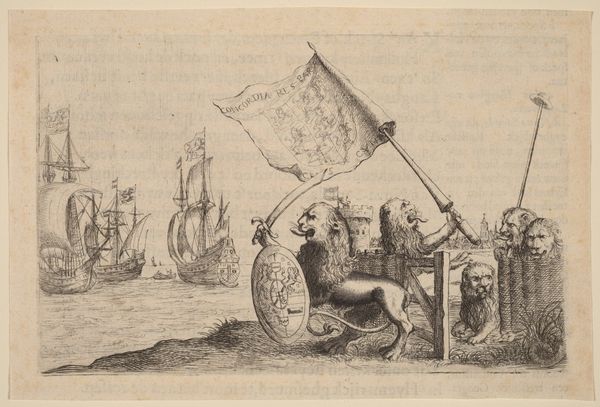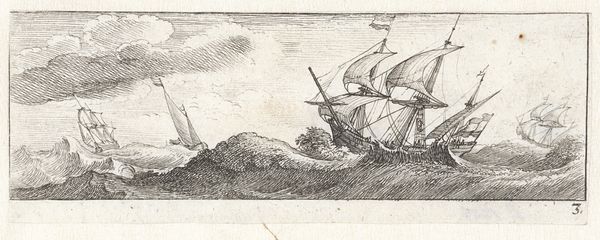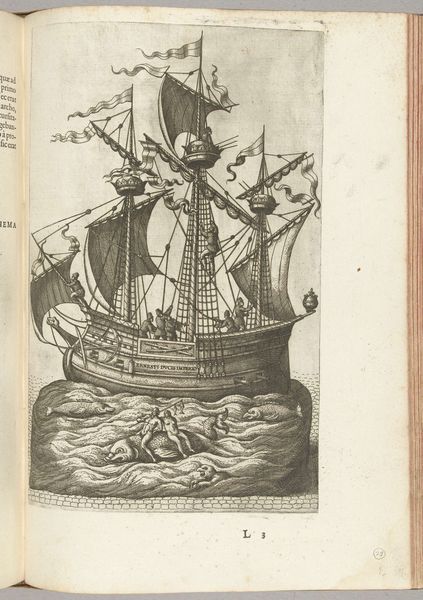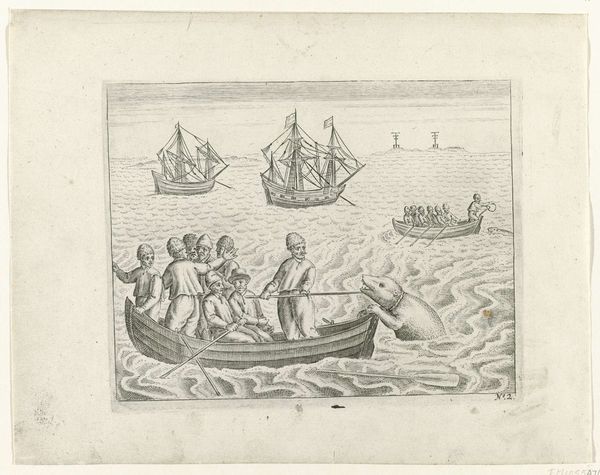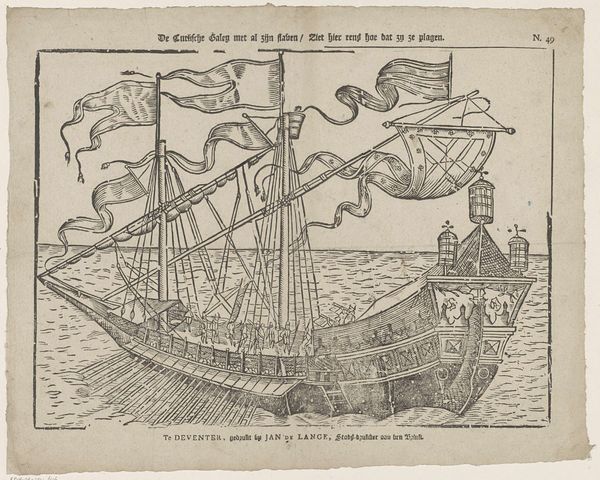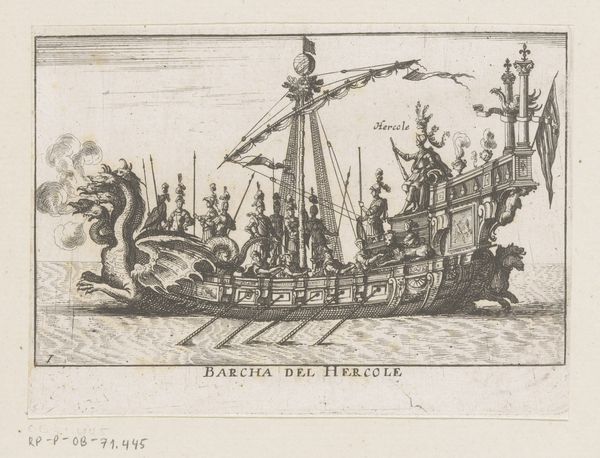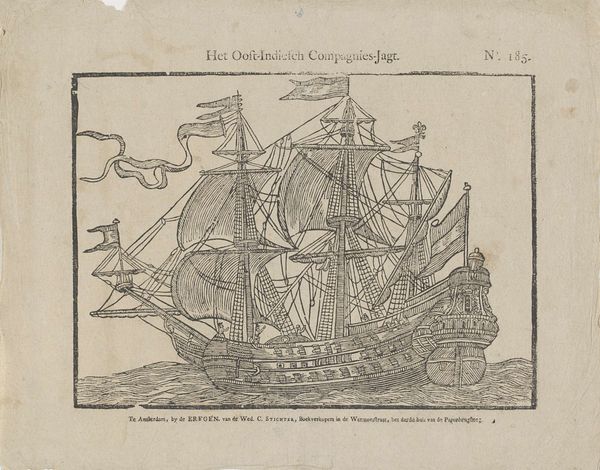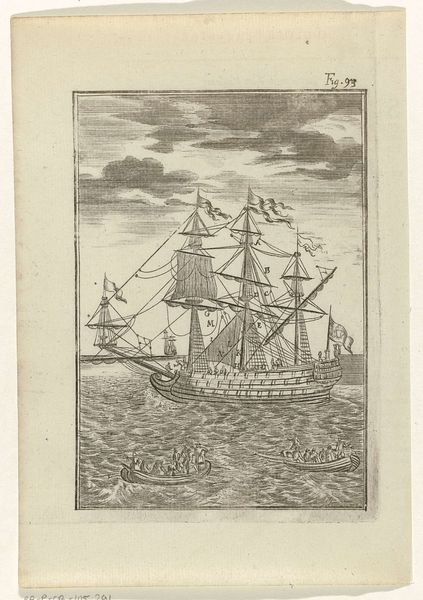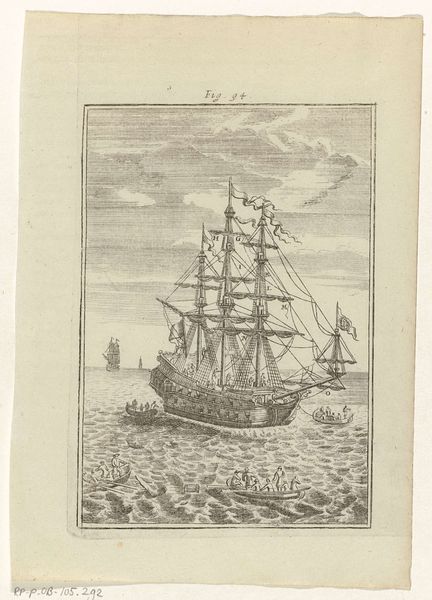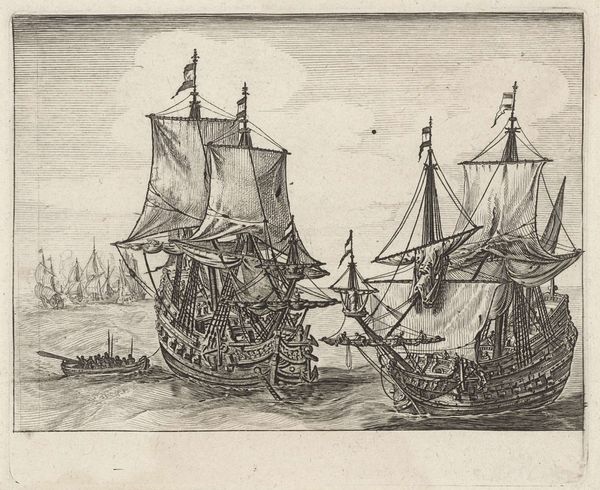
print, engraving
# print
#
pen sketch
#
landscape
#
figuration
#
orientalism
#
line
#
history-painting
#
engraving
Dimensions: height 102 mm, width 134 mm
Copyright: Rijks Museum: Open Domain
Curator: Welcome! Here we have a fascinating engraving, “Vignet met een VOC-schip,” or “Vignette with a VOC ship," created sometime between 1800 and 1878 by an artist only known as Monogrammist P. Editor: My first thought is that it’s meticulously rendered, and somehow claustrophobic, isn’t it? Like a ship trapped inside a crest, guarded by...colonial figures? Curator: The composition is certainly striking. The titular ship is framed by what resembles a heraldic shield, flanked by two figures, one holding an instrument, the other, seemingly a measuring line. We also observe the detailed linework; look at the varying line weights used to depict depth in the ship's rigging and the waves, for example. Editor: Precisely! But it’s difficult to ignore the context. A VOC ship, representing the Dutch East India Company…symbol of global trade, yes, but built on colonial exploitation. Who are those figures flanking the vessel, positioned like guardians or, frankly, trophies? They almost certainly represent stereotypes. It forces us to confront the cost of such "trade". Curator: Interesting, but are we not imposing modern sensibilities onto historical imagery? While you rightly note the presence of potentially problematic cultural representations, the artist, working within a particular historical context, was most likely attempting to glorify Dutch maritime prowess, not interrogate the ethics of the company. Editor: I disagree. By presenting this powerful ship in the guise of a precious object, literally framed and contained, it unwittingly shows how economic activity in colonized regions affected a change to both local inhabitants and materials. We are drawn into examining the details within the ship itself—while glossing over that broader scope. What was life like *on* the ship? Who worked on it, for whose enrichment, and at what expense? These lines lead to much more than an illustration—rather it can act as a gateway into discussions about our present conditions regarding global production, consumption, and how items enter spaces for artistic study. Curator: You frame it well. It's truly a confluence of artistic merit and potent sociopolitical commentary, whether intended or otherwise, as the printmaking displays great command and composition with dynamic lines used to create volume within an economic vessel framed as a work of beauty, fraught with the historical implications that define its image and what is now a piece that evokes complex thought, history, and technique. Editor: Ultimately, it's that intersection—where artistic technique meets the echoes of historical injustice—that makes this piece so compelling.
Comments
No comments
Be the first to comment and join the conversation on the ultimate creative platform.
